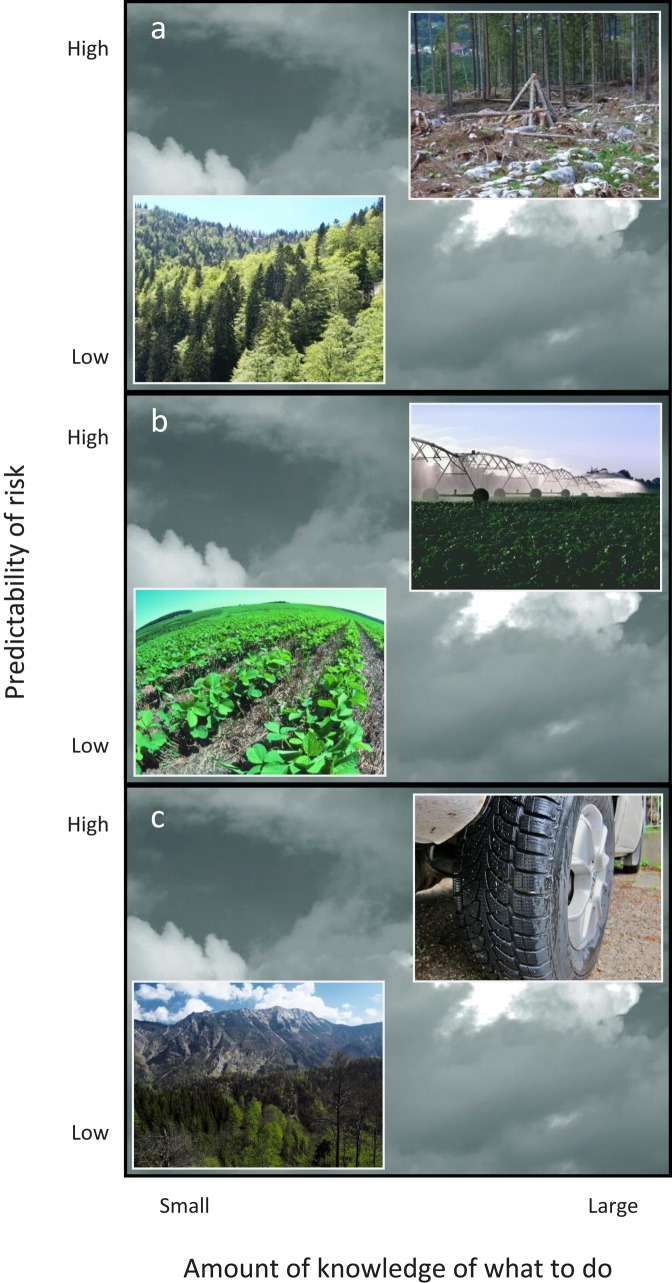Figure 2.
Anticipatory risk management measures (the upper right image in each panel) and measures fostering resilience (the lower left image in each panel) in the context of (a) disturbance management in forest ecosystems, (b) drought management in agroecosystems, and (c) invasive alien species management in conservation. (a) The risk of further attack from bark beetles at the edge of previous year's outbreak front is high, and ample knowledge of measures of how to dampen the further spread of an outbreak is available. Anticipatory risk management, shown here in the form of a beetle trap with a pheromone dispenser (the upper right image), is therefore a highly feasible management option. Considering larger spatial and longer temporal scales, however, the predictability of where and when a bark beetle outbreak will occur is low, making specific anticipatory measures impossible. At these scales, the resilience to such disturbance events can be increased, for example, by lowering the share of host species for aggressive bark beetle species and increasing the response diversity of the system (the lower left image). (b) In order to address the expected increase in drought risk in agriculture, irrigation systems can be extended and improved in order to sustain crop yield in areas that are expected to suffer particularly from future climate change (the upper right image). Considering the limited water resources for irrigation and the possible negative effects on soil erosion, as well as the fact that the precise prediction of the timing and location of future drought is impossible, soil and soil water (and therefore the resilience of agroecosystems) should be protected by, for example, applying no-till farming techniques (the lower left image). (c) Anticipatory measures to prevent the spread of invasive alien species into areas of particular interest for conservation include the inspection and cleaning of vehicles (particularly, the tires and undercarriage) before entering the area (the upper right image). The resilience to invasion by alien species can be increased by restoring natural systems, increasing the connectivity of the landscape, and setting aside sizeable and heterogeneous landscapes for conservation (the lower left image shows the recently extended Dürrenstein wilderness area in the northern Austrian Alps). Photographs: Rupert Seidl, USDA.

